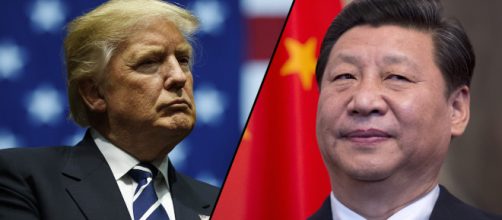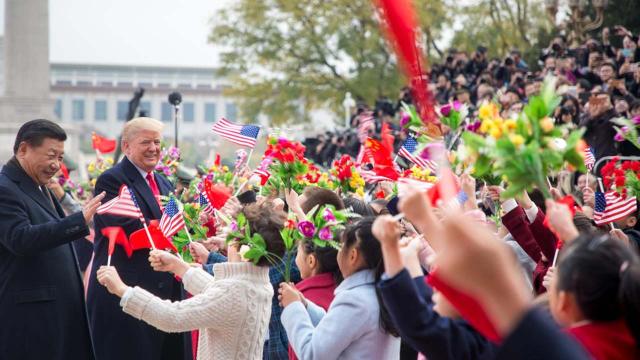The US relationship with China is traditionally a challenging one and has escalated dramatically in the past week. As people around the world warn of an impending trade war between the two superpowers, we look back at the growing tensions throughout 2018.
How the US and China reached a potential trade war
A tariff is a tax – or an extra cost – that one country must pay in order to export their goods to another country. In the international arena, tariff amounts are discussed, decided and enforced in the World Trade Organisation (WTO).
Since Donald Trump assumed office as US president in January 2017, the country has experienced trading tensions with many of the world’s nations. The US has threatened to withdraw from the WTO, and has imposed tariffs on imports from Mexico, Canada, the EU and – most severely – China.
The US trading relationship with China has been the most fraught, and has escalated dramatically in the past week.
Tension begins between the US and China: March to April 2018
Tensions began to escalate in March 2018, when the US imposed new tariffs on steel and aluminium imports, which would impact Chinese exports substantially. China retaliated by announcing new tariffs on 128 US product categories. In response, both the US and China threatened to further increase tariffs on each other’s key exports. By 5 April 2018, Trump announced via Twitter that the US was considering ‘whether $100bn of additional tariffs would be appropriate’.
Tariff increases by the US and China: June to July 2018
Two months later, in June 2018, Trump announced increased tariffs on Chinese exports worth $34bn, which would come into effect on 6 July.
He also threatened further potential tariffs on $16bn worth of products. According to the White House, this was because of Chinese theft of American intellectual property (intangible property that is the result of creativity).
The following day, the Chinese commerce ministry announced that it would 'immediately introduce countermeasures of the same scale and strength'. China announced that, from 6 July, they would introduce 25% tariffs on $34bn worth of US goods, whilst threatening future tariffs on US energy exports.
On 18 June, Trump’s response was to threaten a further 10% tariff on $200bn of Chinese goods, which could come into effect in August.
That month, both the US and China placed 25% tariffs of $50bn worth of each other’s exports.
Tariffs are the greatest! Either a country which has treated the United States unfairly on Trade negotiates a fair deal, or it gets hit with Tariffs. It’s as simple as that - and everybody’s talking! Remember, we are the “piggy bank” that’s being robbed. All will be Great!
— Donald J. Trump (@realDonaldTrump) July 24, 2018
The first threat of a trade war between the US and China: August 2018
By 1 August, reports circulated that Trump’s team was considering raising the proposed tariffs on $200bn in Chinese goods – first announced on 18 June - from 10% to 25%.
China reacted by saying it would 'introduce counter-measures to defend the country’s dignity'. This was the first real threat of a trade war between the two superpowers.
A potential US and China trade war: September 2018
On Monday 16 September, the US confirmed these tariffs on $200bn of Chinese goods. They will start at 10%, increasing to 25% in early 2019 unless the US-China relationship improves. The latest round of tariff increases now affects half of the Chinese exports to the US.
.....China has been taking advantage of the United States on Trade for many years. They also know that I am the one that knows how to stop it. There will be great and fast economic retaliation against China if our farmers, ranchers and/or industrial workers are targeted!
— Donald J. Trump (@realDonaldTrump) September 18, 2018
China has retaliated by imposing new trade tariffs on $60bn of American goods from 24 September.
Amongst others, these tariffs will affect computers, textiles, chemicals, meat, and wine.
International effects of a US and China trade war
Any trade tensions between the world’s biggest trading blocs – the US and China - will inevitably affect the global trading system.
The UK faces a difficult question; should the government intervene in an attempt to prevent a trade war? Whatever role the UK takes, they will have to deal with a challenging trading relationship with the US, both bilaterally and internationally.




